1. Nutraloaf
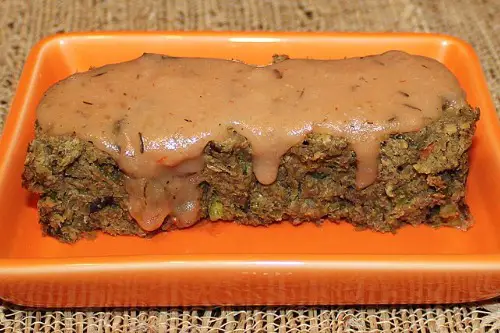
Nutraloaf isn’t something most people would willingly eat, but it has been a staple in American prisons for decades, according to Eliza Barclay from NPR. Designed as a punishment meal, it’s a dense, baked block of blended ingredients—usually a mix of vegetables, grains, and protein—that meets nutritional requirements but offers little enjoyment. The idea was to provide sustenance while removing any pleasure from eating, discouraging bad behavior in inmates. Despite its grim reputation, Nutraloaf has influenced the plant-based food industry, with some companies creating high-protein meal bars inspired by its concept.
While no one is selling “Nutraloaf” by name, its legacy lives on in today’s grab-and-go nutrition bars. Products like meal replacement bars and compact emergency rations take inspiration from its efficiency and nutrient density. The prison system’s approach to cost-effective, complete nutrition has been echoed in survival foods and even some military rations. Though most people wouldn’t associate Nutraloaf with innovation, its principles have quietly shaped the way we think about functional food.
2. Chili con Carne

This spicy, meaty stew became popular in the late 1800s, and Texas prisons played a big role in spreading it, according to Geneviève Gaudreault from Arctic Gardens. Inmates were tasked with cooking massive batches of chili to serve as a cheap and filling meal for large populations. Because it required minimal ingredients and could be easily scaled up, chili became a go-to prison meal. Over time, ex-convicts and former prison cooks took their love of chili to the outside world, where it became a Texas favorite.
As chili grew in popularity, it became a staple at diners, cook-offs, and even school lunches. The prison version was often simpler than the gourmet chilis found today, but its essence remains the same—bold, hearty, and comforting. Canned chili brands also owe some of their success to this institutional history, as mass production made it easy to bring the dish to home kitchens. Whether in a homemade pot or a can of Hormel, the influence of prison chili is undeniable.
3. Ramen Noodle Recipes

Ramen noodles are a staple in American prisons, where they’re often more valuable than money. Inmates use them to create everything from “prison pad Thai” to ramen burritos, mixing in whatever extras they can get their hands on. The creativity born from necessity has made these improvised recipes a cultural phenomenon, inspiring viral videos and even cookbooks, according to Claudia Geib from Eater. What started as a way to make bland noodles more exciting has turned into an underground culinary movement.
Former inmates have brought their ramen innovations to food trucks, restaurants, and social media, where people are fascinated by the resourcefulness of prison cooking. Some trendy restaurants now serve gourmet takes on “prison ramen,” elevating the once-humble dish with expensive toppings. Even outside of prison, people experiment with ramen-based meals, proof that necessity can lead to true innovation. In a way, prison food culture has helped make instant ramen more than just a college student’s go-to meal.
4. Sloppy Joes
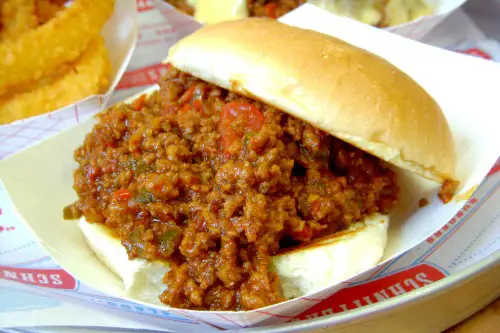
The exact origin of Sloppy Joes is debated, but prison cafeterias helped cement its place in American comfort food. Cheap ground beef mixed with tomato sauce made for an easy, budget-friendly meal that could feed hundreds of inmates, according to David M. Reutter from Prison Legal News. The loose, saucy texture made it possible to stretch the meat further, helping institutions cut costs while keeping meals filling. When released prisoners sought out familiar foods, they recreated this dish at home, and it soon found its way into school cafeterias and diners.
Because it was inexpensive and easy to make, the Sloppy Joe became a household favorite during the Great Depression. It continued to thrive in the following decades, showing up in everything from home kitchens to fast-food menus. Even today, variations of the Sloppy Joe can be found in BBQ joints, sandwich shops, and freezer aisles. Though it may not be gourmet, it remains a comfort food classic with deep institutional roots.
5. Hoosgow Hash
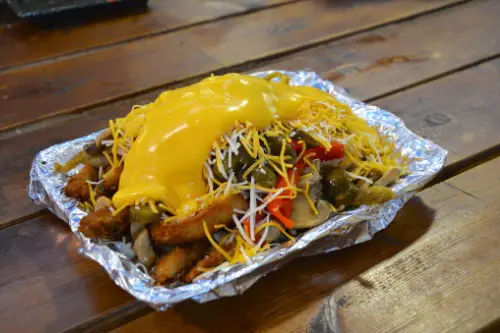
“Hoosgow” is old-school slang for jail, and Hoosgow Hash is a meal born out of prison necessity. Made by frying together whatever scraps were available—potatoes, meat, beans, or vegetables—it was an efficient way to avoid food waste. The idea was simple: take what little you had, throw it in a skillet, and turn it into something edible. This hash-style cooking eventually became popular in diners, where similar “garbage plates” or “skillet meals” still exist today.
Even outside of prison, people continued the tradition of making hash from leftovers. Breakfast spots across America serve corned beef hash, country hash, and other skillet-fried mixtures that follow the same principles. The beauty of hash is that it’s endlessly adaptable, making it a natural fit for both prison kitchens and home cooks on a budget. What started as a necessity has become a breakfast favorite that never really goes out of style.
6. Peanut Butter and Jelly Sandwiches

Believe it or not, the widespread popularity of PB&J sandwiches can be traced in part to the prison system. They became a staple in correctional facilities because they were cheap, easy to store, and required no cooking. Institutions needed meals that were nutritionally adequate while minimizing costs, and peanut butter provided protein without refrigeration. As inmates reentered society, many stuck with what was familiar, helping to spread the love of peanut butter and jelly.
While PB&J sandwiches were already popular before prisons adopted them, their institutional use helped solidify them as an everyday American meal. They later became a favorite in school lunches, military rations, and home kitchens. Today, you’ll find PB&Js on diner menus, in pre-packaged form at grocery stores, and even as gourmet versions at high-end restaurants. The humble sandwich owes part of its mainstream success to its practicality in institutional settings.
7. Pruno (Prison Wine)

Pruno, or prison wine, is a DIY alcohol made by fermenting fruit, sugar, and bread in secret prison batches. Inmates use whatever ingredients they can find, often fermenting oranges, apples, or even ketchup in plastic bags. The result is a strong, often foul-tasting alcoholic drink that has been a part of prison culture for decades. While most people wouldn’t willingly drink it, this resourceful brewing method has influenced the rise of homemade and small-batch fermented drinks.
Outside of prison, the basic concept of fermenting fruit and sugar to create alcohol has gained popularity in craft brewing and home fermentation circles. Some trendy breweries and homebrewers use similar techniques—minus the moldy bread—to create natural fruit-based alcohol. Fermentation experimentation has grown, with people making homemade meads, ciders, and fruit wines inspired by the same principles used in prison. Prison ingenuity played a surprising role in pushing the boundaries of DIY alcohol.
8. Baked Beans
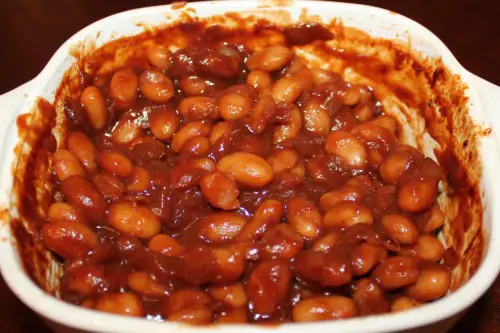
Canned baked beans became a prison favorite because they were cheap, non-perishable, and easy to prepare. Prison cooks often modified them with molasses, brown sugar, or ketchup to make them more palatable. Since beans are high in protein and fiber, they were a cost-effective way to provide nutrition in large-scale meal plans. Over time, the simple but satisfying taste of sweet and tangy baked beans made its way from prison trays to backyard barbecues.
As baked beans became more popular, commercial brands like Bush’s and Heinz capitalized on their appeal. Today, baked beans are a staple of American cookouts, often served alongside hot dogs, burgers, and ribs. While most people associate them with home-cooked meals or canned convenience, their presence in institutional food service helped cement their status as an American classic. The prison kitchen’s need for cheap, filling meals played a role in making baked beans a household favorite.
9. Chipped Beef on Toast (SOS)

Also known as “Sh*t on a Shingle,” this dish of dried beef in white gravy over toast was common in both prisons and the military. It was a way to stretch cheap, shelf-stable ingredients into a meal that provided protein and calories. Because dried beef lasted indefinitely, it was a reliable source of sustenance in institutional kitchens. Despite its unappetizing nickname, SOS became a nostalgic comfort food for many who grew up eating it.
After leaving prison or the military, many people continued making SOS at home, passing the recipe down through generations. It became a staple in diners and truck stops, where it was served as an affordable, hearty breakfast. While it’s not as common today, you can still find it on menus in old-school American diners and military-themed restaurants. What started as a necessity in tough times became a dish with its own dedicated fan base.
10. Spread (Prison Casserole)

Prison “spread” is an improvised meal made by mixing together whatever ingredients are available, often using ramen, chips, canned meat, and sauces. Inmates use creative methods to make the most out of limited commissary items, sometimes combining them in a plastic bag and letting the heat from hot water “cook” the dish. While originally just a way to make prison food more edible, the concept has taken on a life of its own. Former inmates have brought their creative combinations to food trucks, YouTube cooking shows, and even restaurant pop-ups.
Some food lovers have embraced the “spread” concept as an underground culinary movement, experimenting with their own versions. The idea of transforming cheap, processed foods into something flavorful appeals to those who enjoy pushing the limits of food creativity. A few trendy restaurants have even introduced “prison-style” dishes as a novelty. What started as a survival technique has become an unexpected part of food culture, proving that ingenuity can thrive anywhere.
11. Meatloaf

Prison meatloaf was designed to be cheap, easy to make in bulk, and difficult to mess up. Made with ground meat, breadcrumbs, and eggs, it was one of the more tolerable prison meals and eventually gained popularity outside the system. The loaf shape made it easy to portion out, and the breadcrumbs helped stretch the meat further, reducing costs. Because of its simplicity and affordability, many families adopted similar recipes, creating the homestyle meatloaf that became a household staple.
As meatloaf gained popularity, variations of it began appearing in restaurants, school cafeterias, and even high-end eateries. Some versions use gourmet ingredients like veal and lamb, while others stick to the classic ketchup-topped comfort food style. Despite its humble origins, meatloaf remains a nostalgic favorite for many Americans. Whether served in diners or fine dining establishments, its history in institutional kitchens is an undeniable part of its legacy.
12. Fried Bologna Sandwiches
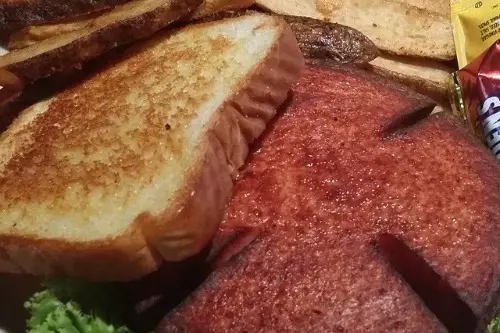
Fried bologna sandwiches became popular in prisons because bologna was cheap, shelf-stable, and easy to prepare. Many inmates grew up eating them, so the familiar taste was comforting in an otherwise harsh environment. With limited access to fresh ingredients, frying bologna was a way to add flavor and texture to an otherwise bland protein. After release, some carried their love of fried bologna into the outside world, where it became a diner and truck-stop classic.
Over time, the fried bologna sandwich gained a cult following, especially in the Midwest and Southern states. Some restaurants have even put gourmet spins on the dish, adding specialty mustards, fancy cheeses, and artisanal bread. What was once an institutional necessity has now found a home in both greasy spoon diners and hipster eateries. It’s a reminder that comfort food can come from the most unexpected places.
13. Tamales
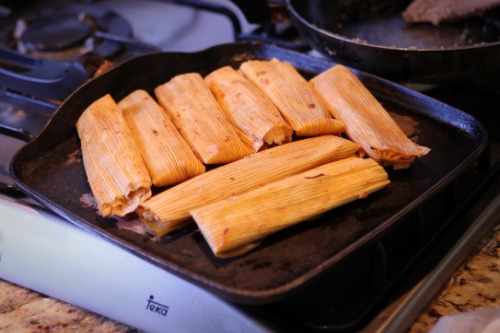
Inmates in Southwestern prisons found a way to make tamales using commissary ingredients like crushed chips for masa and canned meat for filling. These makeshift tamales became a cherished meal behind bars, a way for incarcerated individuals to recreate traditional flavors with limited resources. Since tamales are a staple in Mexican and Latino communities, many prisoners had the knowledge to make them but had to get creative with substitutes. Even with the unconventional ingredients, the technique and love behind them remained the same.
Once out, some former inmates started businesses selling homemade tamales, helping to popularize them even more. Today, tamales are a beloved street food across the U.S., enjoyed by people from all backgrounds. While the best tamales are still made with fresh masa and traditional fillings, the prison versions show how food traditions can adapt and survive under any circumstances. The tamale’s journey from home kitchens to prison kitchens and back again is a testament to its lasting appeal.


